Description
Model 1850 foot officers sword by John Roner of Cincinnati, Ohio, featuring 30 3/4 inch
blade etched with foliage, “US”, and a 34-star US flag (mild pitting, light gray patina
overall, with moderate edge wear including some strike marks). Cast brass hilt of
standard pattern with pierced foliage in the guard, capstan pommel with acanthus
decoration, and leather grip wrap with twisted brass wire. Black leather scabbard with
brass mounts featuring the following presentation inscription on the locket: “Presented
to/COL. S.A. RICE/by officers of the/33rd Iowa Vol.”. Rice’s biography and distinguished
service record listed below. Sword is untouched since the war, featuring a lovely rich
patina to the brass. Scabbard leather with mild flaking and having shrunk slightly,
leaving the scabbard mounts loose as expected from over 150 years of age. Scabbard
drag with shallow dents and reverse of guard slightly bent, typical of field use This
sword was likely presented to Rice shortly after taking command of the 33rd Iowa in 1862
and shows signs of age and field use. As a standard pattern M1850 Foot Officer’s
Sword and not a high grade presentation piece, it is likely the sword which Rice carried
in the field and was probably at his side when he received his mortal wound. A truly
one-of-a-kind piece of American History.
Biography of Samuel Allen Rice:
Born January 27th, 1828 in Cattaraugus, New York, Samuel Allen Rice graduated from
Union College at Schenectady, New York in 1849. In 1851 he moved to Oskaloosa,
Iowa where he practiced law and then served as Iowa’s second Attorney General from
1856 to 1861 on behalf of the Republican Party. In August, 1862 he was chosen by
Governor Kirkwood to organize and command the 33rd Iowa Infantry in Oskaloosa, Iowa
and commissioned as the regiment’s colonel.
Rice commanded the regiment during deployments to Columbus, Kentucky, Union City,
Tennessee, the Yazoo Expedition in Mississippi, and on to Helena, Arkansas. He
assumed command of the Second Brigade, Thirteenth Division, Thirteenth Army Corps
on June 11, 1863. The brigade consisted of the 29th, 33rd and 36th Iowa Infantry, the
3rd Iowa Battery, and the 33rd Missouri Infantry. Rice commanded the brigade at the
Battle of Helena, an unsuccessful Confederate attempt to seize the fortifications
surrounding Helena, Ark. and relieve the forces at Vicksburg. During the battle the
brigade suffered 45 killed, 96 wounded and 30 missing.
In recognition of his distinguished service at the Battle of Helena, he was promoted to
the rank of Brigadier General on August 4, 1863, upon which date he assumed
command of the 13th Division. The division then marched toward Little Rock, which fell
in September, 1863. They remained in winter quarters in Little Rock until March 23rd,
1864, upon which date they marched with the army under Major General Frederick
Steele, to cooperate with the army under Major General Nathaniel Banks, who was then
engaged in his ill-fated Red River campaign.
The Red River Campaign, designed to capture Shreveport, control the Red River, and
occupy East Texas, consisted of a three-pronged assault with about 20,000 troops
under Banks’ command coming north from New Orleans, 15,000 troops commanded by
Brigadier General A. J. Smith coming from Vicksburg, and 7,000 troops under Steele
heading south from Arkansas. The assault was supported by gunboats under the
command of Rear Admiral David Porter. Banks was soundly defeated at the Battle of
Mansfield, LA and Porter’s gunboats were forced to turn back due to low water levels
and Confederate fire from shore batteries. Meanwhile, Steele’s forces got only as far
south as Camden, Arkansas and were forced to retreat due to supply shortages and the
risk of being surrounded by superior forces. With the Confederates in hot pursuit,
Steele’s forces reached Jenkins Ferry on the Sabine River on April 29, 1864. Steele
supervised the dangerous crossing over the swollen river while Rice was left in
command of the rearguard of approximately 4,000 infantrymen where they built
breastworks to provide a formidable defense to guard the crossing. On April 30th the
Confederates launched repeated assaults against the defensive works, all of which were
repulsed, and Steele’s forces successfully completed their retreat across the river. With
the Confederates in no position to pursue, this effectively ended the campaign.
Confederate casualties were approximately 1,000, while the Union suffered about 700.
Rice received a bullet wound to the foot during the final assault at Jenkins Ferry and
died of complications from this wound in Oskaloosa on July 6th, 1864.




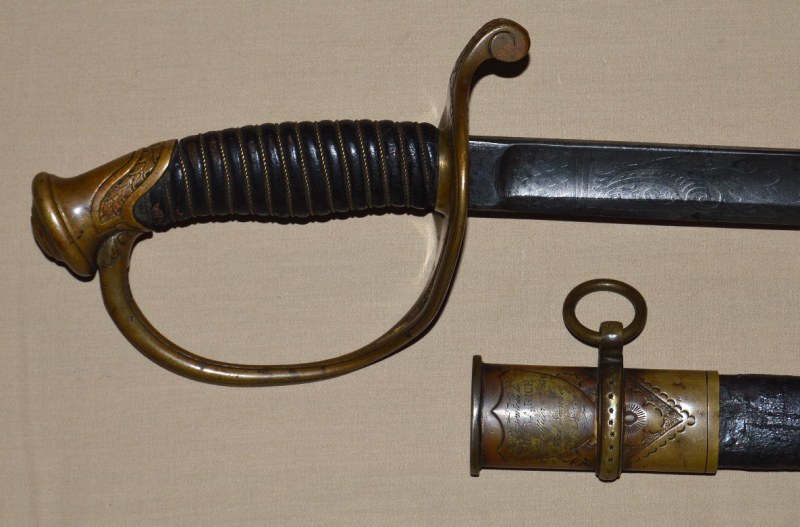
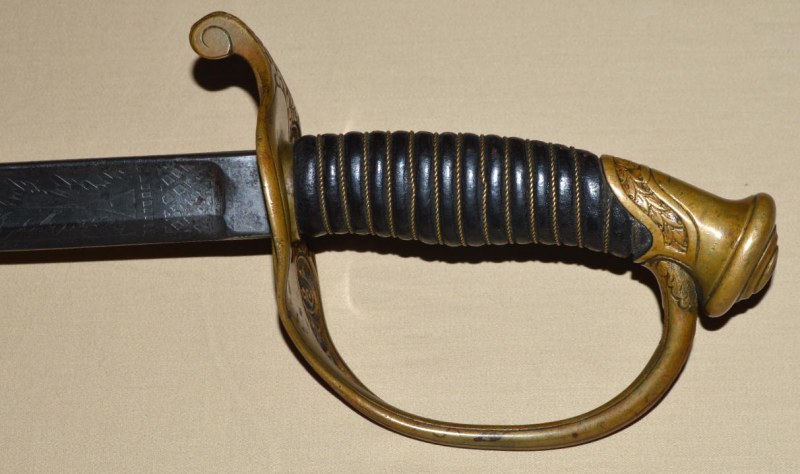
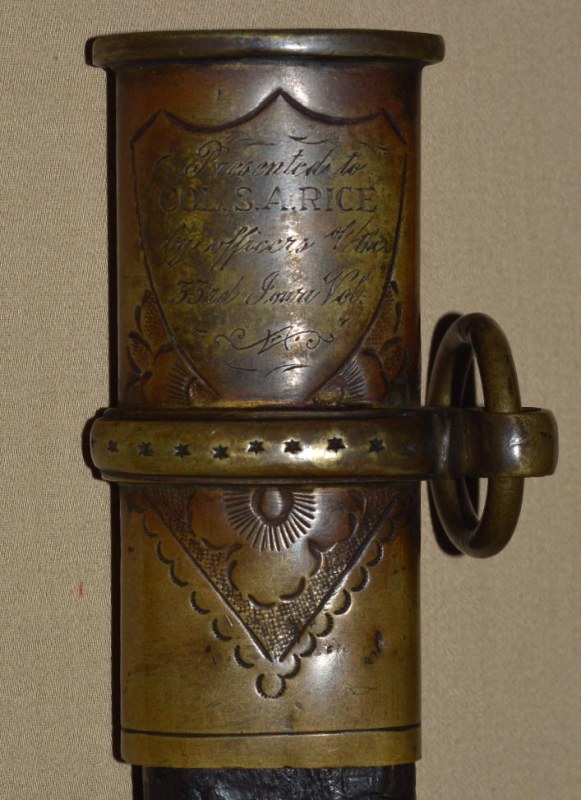

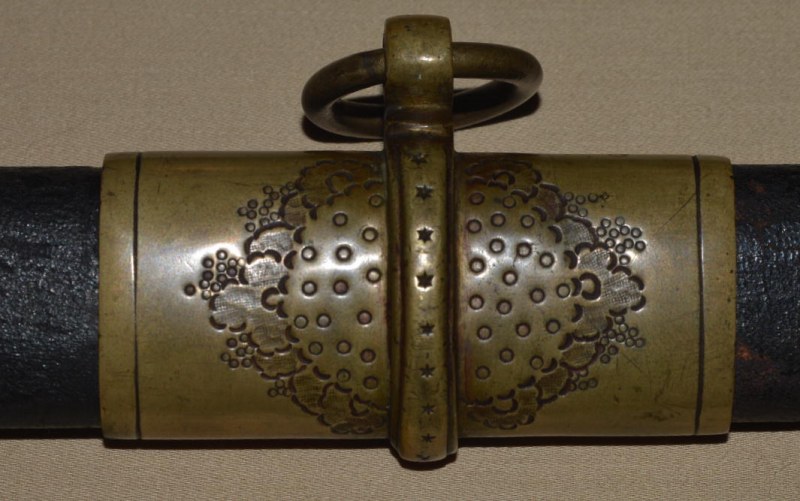



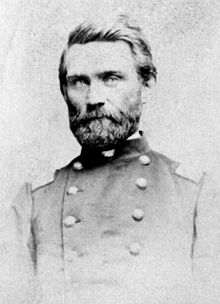
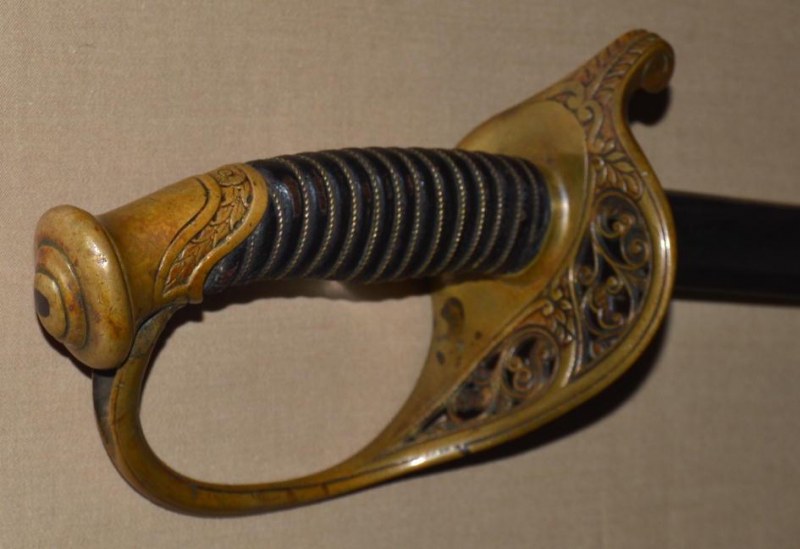
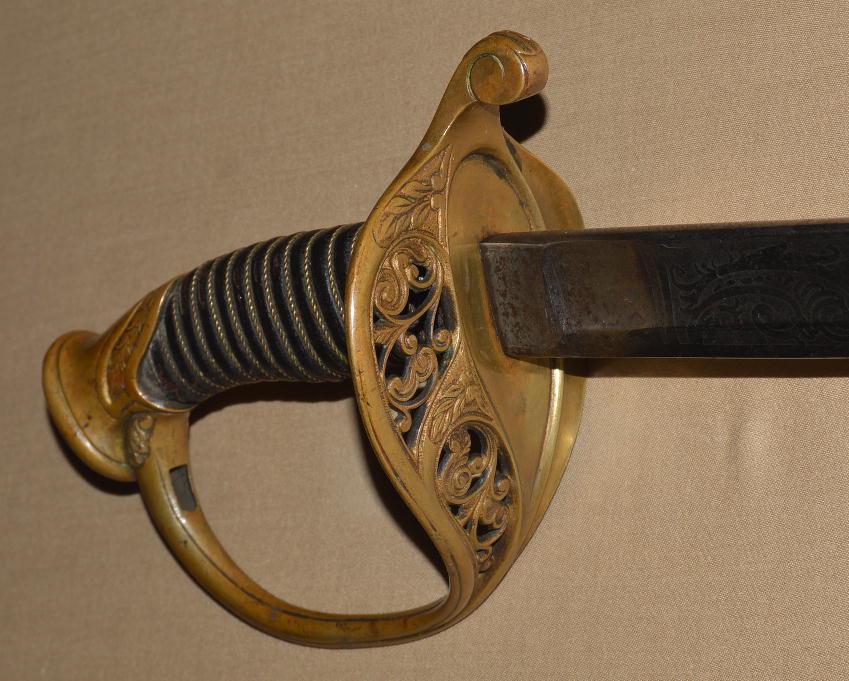
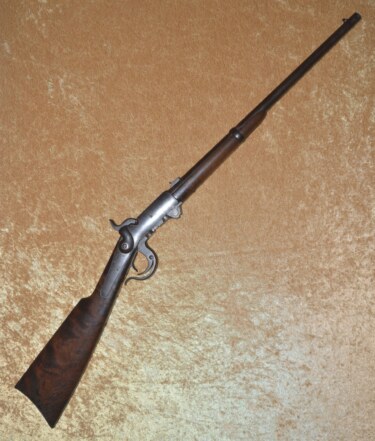 Special Production US Civil War 5th Model Burnside Carbine
Special Production US Civil War 5th Model Burnside Carbine  French and Indian Wars/Revolutionary War Era Spiked Tomahawk
French and Indian Wars/Revolutionary War Era Spiked Tomahawk  US M1795 Flintlock Musket, Dated 1811
US M1795 Flintlock Musket, Dated 1811 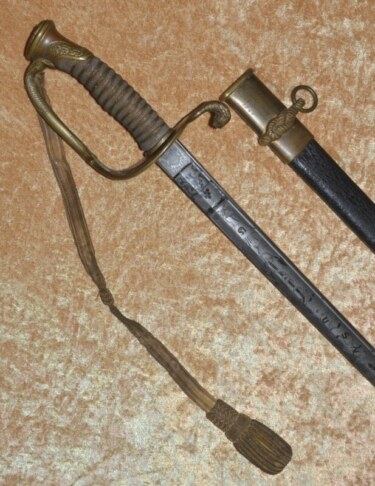 Fine Presentation Civil War M1852 Naval Officer’s Sword
Fine Presentation Civil War M1852 Naval Officer’s Sword